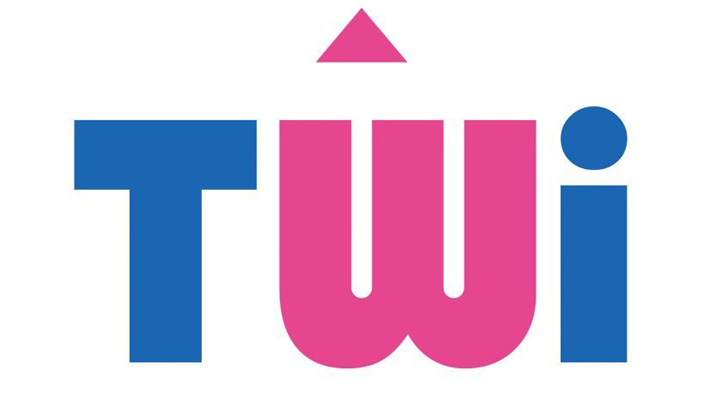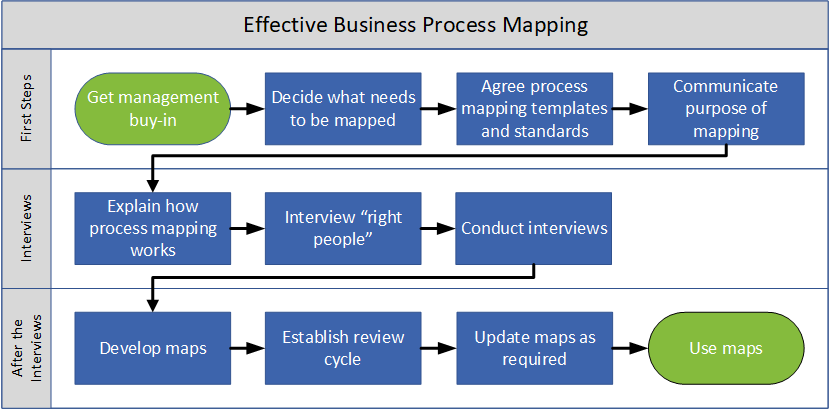Perhaps your organisation wants to automate a process, improve efficiency, or move from one infrastructure provider to another. Whatever the motivation, business process mapping is often the first step in transforming business processes within an organisation. Business process mapping involves detailing the steps in a process, identifying the roles responsible for carrying out each step, and then creating a visual representation of the process.
Accurate and comprehensive mapping of the existing processes helps the transformation to progress smoothly and reduces the risk of unforeseen problems arising as a result of any change. Even if your organisation is not in a period of intense change, there are advantages to documenting business processes. Detailed process maps can help identify inefficiencies or duplications in existing working arrangements, ensure that process knowledge is not lost when an employee leaves, and support new hires in understanding their role.
At TWi, we are often asked to help organisations carry out process mapping. We’ve come up with the following guidelines that we hope will be useful for you when you embark on your next business process mapping project. Our experience has been that conducting interviews with experts as part of the mapping process is a worthwhile approach, particularly if you have limited time available for the mapping project. And that’s probably quite likely!
First Steps
Before you can begin process mapping, some initial preparations and decisions need to be made.
Get Buy-In from Management
Securing a project sponsor is a vital prerequisite to any process mapping project. The sponsor can liaise with management to ensure that the process mappers have sufficient time and support to complete their work. Where possible, a block of time should be set aside for the mapping. A short, concentrated period of process mapping, where all participants have reasonable availability, is a good approach. It is much easier to sustain enthusiasm for the project when the mapping can be condensed into a short time frame. Having an influential sponsor on board should reduce the risk of the project being derailed by the unavailability of key personnel.
Decide What Needs to Be Mapped
It is important to keep the reason for the process mapping continually in mind. This will determine the processes that need to be mapped and the areas within each process that require the most detail. Identify the processes before starting the process mapping. Processes that are overlooked at this point can always be added to the inventory later, but it is helpful to have a preliminary list of the processes available from the outset. It is also important to establish the start and end points of each process. As the mapping progresses, the project organiser may need to remind participants of the reason for the process mapping if they feel that the focus is being lost.
Agree Process Mapping Templates and Standards Before Starting the Mapping
Before beginning the process mapping, it is helpful to create templates for the process maps and establish standards for the written elements. This preparatory work should reduce the need for subsequent rework. It is good practice to have the key stake holders review some of the first completed process maps. If any issues crop up, it is much better to address these concerns at this point and not later when all the process maps have been developed.
Communicate the Purpose of the Mapping
Process mapping, like everything else, works best when people understand why it is happening. Set out clearly the reasons for the mapping and explain its expected benefits. If participants feel that the process mapping can ultimately make their lives easier, they are much more likely to engage positively with it. Explaining the purpose of the process mapping within the wider organisation also ensures that there are no misunderstandings or unfounded concerns as to why the mapping is taking place.
Interviews
Once the preparations are in place, it’s time to conduct the process mapping interviews.
Explain Clearly How Process Mapping Works
Process mapping often requires the input of multiple people within the organisation. It is important that everyone involved understands how process mapping works. If possible, begin the process mapping by holding a session where some typical processes are mapped. These opening sessions allow all parties to see how process mapping works and to query any aspects that they are uncertain about. After these initial general sessions, time constraints may mean that the interviews need to be conducted in breakout sessions. Even If this is the case, the earlier general sessions help ensure that the process mapping is approached in a consistent manner.
Interview the “Right People”
Identify the experts in a process area and assign these experts to appropriate process maps. Ensure that the expert is comfortable that they have the required knowledge to detail the process. If more than one expert is required to explain the process from start to finish, try to get everyone together in a meeting or a call. It is generally much easier and quicker to thrash out any differences in real time rather than in an offline review cycle.
Conduct the Interviews
Having experienced process mappers conduct interviews with the experts should result in more detailed step information being gathered than if the subject matter experts are simply told to record the steps in a process. This is because the interviewer will require a full explanation of how things work before they can understand the process flow. An advantage of having non-subject matter experts conduct the interviews is that they are likely to elicit information on hidden steps that might go undocumented if the conversation is between two experts in a process.
Focus on the Step Information in the Interviews
Process mappers should focus on accurately recording the step information during the interview. It may be helpful to roughly draft the steps in a diagramming tool but this must not be allowed to distract from the expert’s outlining of the process steps. If time allows after the interview, the expert can do an initial check of the interview notes for accuracy and completeness. In any case, the expert will have an opportunity to fully review the completed map.
After the Interviews
After the interviews are complete, it’s time to complete the process maps, review them, and set a plan in place to update the maps as required.
Develop Process Maps
Using the interview notes as the basis, the process mappers develop the maps. Unless there are good reasons not to, it is best to use the generally understood mapping conventions. For example, use swim lanes to separate the actions of the different actors in the process or a diamond shape to denote the decision points. For more information on the process mapping tools available, see this TechRadar article: https://www.techradar.com/news/best-flowchart-software.
Establish a Review Cycle
When the process maps are complete, the expert must carry out a full review. In addition, another qualified person should also review each process map. Even subject matter experts can interpret a process in a non-standard manner or omit steps and such instances must be queried and addressed before the process is approved. Follow-up sessions can be organised to resolve any cases where experts disagree on the order or inclusion of process steps.
Keep the Maps Up to Date
Once the process map is approved and circulated, it is important to have it regularly reviewed. Over time, processes change because of new ideas, new requirements, and new technology. The process maps need to be reviewed and updated regularly to reflect these changes.
Use the Maps!
After all your hard work in developing the process maps, don’t let them gather dust or hide out of sight on a forgotten file share. Ensure that the maps form part of the training for new hires and that they are referenced during any refresher training for existing employees. You could also consider organizing fun activities, like quizzes, to raise employee awareness of the process maps.
Final Thoughts
If you are looking for further process mapping guidance, the Performance Excellence Network have produced the excellent 10 Commandments of Process Mapping to keep you on the right path.
Effective business process mapping can play a significant role in enabling your organisation to manage change and achieve consistency of action. We hope that the guidelines outlined here will help you to have a productive and worthwhile mapping experience.












